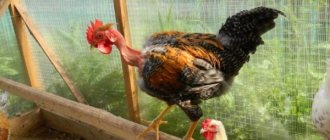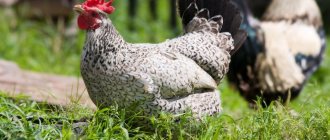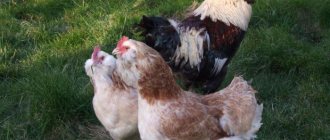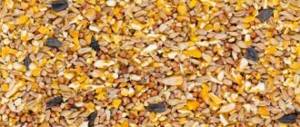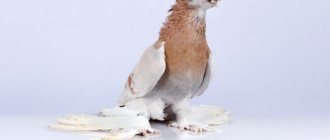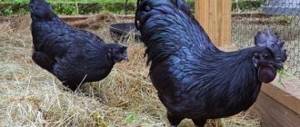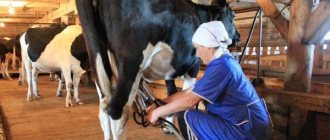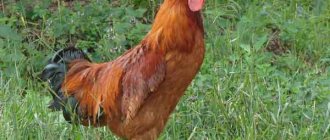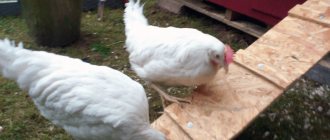A bit of origin history
So, where does the unusual bare-necked chicken come from? In fact, several breeds of chicken fit this description. But the most popular among the bare-necked is the Spanish flu. Spain is the birthplace of this breed. However, bare-necked chickens came to Russia from Romania and Hungary. Therefore, at first in our country these chickens were called Transylvanian.
What influences the plumage features of barenecks? It's all due to a special gene that is passed on from generation to generation. Already at the embryonic stage, chickens develop uneven plumage. There are no feather follicles in the neck area, which means birds will never grow feathers in this area. By the way, the bare-necked gene is dominant: when crossed with other breeds, geneticists always get chickens without feathers on the neck/
Breeding
The exact origin of these domestic birds is unknown. They appeared more than 100 years ago. There is an assumption that this breed was originally bred in Andalusia, which belongs to Spain. According to another version, their homeland is Transylvania or Semigorye (part of Romania), therefore the chickens are otherwise called “Transylvanian” or “Semigorsk”.
There are also various opinions about the way they were born. Some put forward the version that bare-necked chickens are the result of crossing Indian fighting chickens with local breeds.
Others say that this is an independent species that occurred as a result of genetic abnormalities. However, both of these opinions are doubtful, since scientists have proven that this is a purebred chicken.
Appearance
Representatives of the Spanish chicken breed have a unique plumage. On the body it does not differ from that which other birds have, but on the neck it is completely absent. This feature gave rise to the name bare-necked chicken breed. The bird's bare neck has an intense red color, which is only slightly inferior to the beard and crest.
The bare neck is a genetic feature that is formed during the intraovarian development of the bird. The chickens, having hatched, already have a sign of the breed and there is no fluff on their necks. On the head, bare-necked chickens have an island of feathers that looks like a hairstyle. On the chest side at the base of the neck, birds have lush downy plumage, similar to a frill.
The bird's earrings are bright, round, and its leaf-shaped crest is bright red. The Spanish woman's face is smooth, red or gray. The eyes are quite large red-red. The beak is dark, slightly curved downwards.
The bird's body is compact, with a well-developed chest and rounded belly. The wings are quite long, not adjacent to the body, hanging quite freely on the sides. The paws are distinguished by their power and strength. The plumage of bare-necked chickens comes in a variety of colors.
They are:
- black;
- white;
- redheads;
- partridge;
- motley;
- gray;
- blue.
Deviations from breed standards are considered significant defects and such birds are excluded from breeding.
On a private farmstead, where there is no need to maintain the elite status of the bird, all birds are allowed to breed, since external defects do not affect productivity. The attractive description of the breed makes it a dream for many breeders. It is not uncommon for a poultry farmer to acquire only a few individuals for his main flock of chickens, since the bare-necked chickens simply captivate him with their appearance.
Description of the naked breed of chickens
Large chicken for meat and egg production. The average weight of a rooster is 3.9 kg, a chicken is 3 kg. Egg productivity is low. Chickens lay no more than 160 eggs per year. The eggs are large, weighing 55-60 g. The shell of the eggs can be white or beige. Due to the small number of eggs, it is not profitable to breed barenecks only as an egg breed. But bare-necked hens reach egg-laying age at 5.5-6 months, so culled chickens and unnecessary roosters can be used as broilers. By 4 months, chickens reach a weight of more than 2 kg, which is a good result for a non-specialized breed, although broilers grow faster.
The main difference between this breed and other chickens is the naked neck, which is caused by a dominant mutation, which is why naked-necked chickens are born when crossed with ordinary chickens. Moreover, chickens have a bare neck from the moment they hatch from the egg. The lack of down and feathers on the necks of chickens is caused by underdevelopment of feather follicles.
Important! To be recognized as a purebred, a bare-necked chicken must be homozygous for the Na gene.
Heterozygous bare-necked chickens have average feathering scores between regular and naked-necked chickens.
The homozygous callotch has not only a completely naked neck, but also unfeathered areas under the wings: apteria. There are small bare areas on the shins as well. In general, chickens of this breed have only half the feathers of the norm.
On a note! Due to the small number of feathers on the body, bare-necked Transylvanian chickens appear moulting or sick.
In fact, there is nothing wrong with the birds, this is their normal appearance. But precisely because of this specific appearance, bare necks are not popular among farmers.
Breed standard
The head is small and wide. The comb can be either leaf-shaped or rose-shaped. On a leaf-shaped comb, the teeth should be “cut” into the same shape. The front part of the crest slightly extends over the beak. The back of the head and the crown are covered with feathers. The face is red. Earrings and earlobes are red. Bare-necked chickens have orange-red eyes. The beak can be yellow or dark, slightly curved.
Important! Transylvanian naked-necked chickens can only have a red neck.
The skin on the neck is rough, often with “bulbs” similar to those on the neck of a turkey. The neck is completely devoid of feathers right down to the crop.
The body is elongated. The chest is round, with well-developed muscles. The back is straight. The topline appears smoothly curved due to the low, high-set tail.
The tail braids are wide, but short and barely cover the tail feathers. An option with long but sparse braids is possible. The wings are slightly lowered. Legs are short and strong. In “colored” bare-necked chickens, the metatarsals are yellow-orange or gray in color. Exception: white body color. In this case, the metatarsus may be white.
The colors of bare-necked chickens are quite varied. The UK standard allows for white, black, red, red, cuckoo and lavender. In the USA, only 4 varieties are allowed: black, white, red and tan. At the same time, Transylvanian bare-necked chickens have not become widespread in these countries.
On a note! There are no standard colors for “European” collareds; they can be of any color.
Defects of the standard
In most cases, these signs indicate that the chicken is not purebred:
- white earrings;
- dark eyes;
- black face;
- feathered neck and inner part of the lower leg;
- elegant body;
- yellow skin on exposed areas.
Since the Na gene is dominant, naked necks can occur in crosses between bare-necked and regular chickens. But in the case of a crossbred bird, any of the characteristics will definitely deviate from the breed standard.
Productivity
Bare-necked chickens, due to their characteristics, are not considered particularly productive in terms of egg production. They can give a farmer about 160 eggs per year. The hen begins to lay eggs when she reaches six months of age. As for the size of the egg itself, they are usually 58-60. Despite the lack of high rates in the process of laying eggs, the bare-necked chicken becomes sexually mature quite early, and this is important for the poultry farmer.
The shell of this product most often has a beige or cream tint. The advantages of the breed include the fact that bare-necked laying hens do a good job of caring for their chicks. That is, it is quite possible that you will not even need to resort to much more serious measures - using an incubator. 95% of chickens survive, which is an excellent indicator for laying hens/
Causes of baldness and diagnosis of the problem
A poultry farmer can try to find out why chickens are going bald on their own based on the signs that are characteristic of a particular problem.
Parasites
Feather loss is often caused by the following types of parasites in chickens:
- The chicken mite is an ectoparasite up to 1 mm in size. It has an oval red body. Ticks are dangerous for both laying hens and broilers. Signs of infection: drop in egg production, self-pecking, loss of appetite, loss of body weight, appearance of bald patches, inflammation of the skin in the area of shabby areas. You can see the parasite with the naked eye by spreading the feather cover of the bird with your fingers. The tick provokes the development of knepidocoptosis, in which the phalanges of the paws of sick individuals become covered with growths and bleeding wounds. The disease in turn causes lameness.
- Bird lice or chicken lice are a skin parasite that causes mallophagosis in chickens. Symptoms of the disease: weight loss, loss of appetite, decreased egg production, bald patches, inflammation of the eye mucosa, restless behavior. When examining a sick bird, you can find microholes at the base of the feathers, similar to holes from a needle.
- Chicken fleas are skin parasites that, in small numbers, are difficult to recognize with the naked eye. In advanced cases, their accumulation can be seen in the area of the eyes, beak and crest. Sick chickens behave nervously, lose weight, and systematically pluck their feathers, which causes local baldness. Chicken fleas are carriers of helminth eggs and provoke the development of sleeping sickness, plague, salmonellosis and brucellosis in poultry.
- Bedbugs are blood-sucking ectoparasites that are carriers of such dangerous diseases as pasteurellosis, spirochetosis, plague, etc. Chickens infected with bedbugs constantly itch, pull out each other’s feathers, eat poorly and behave restlessly. The feather cover becomes dull. When self-pecking occurs, bald spots form on certain parts of the body of a sick bird.
The cause of baldness can be associated not only with external parasites, but also with internal ones.
Helminthiases cause deterioration of feather cover, contribute to the development of hypovitaminosis, and provoke self-pecking. The result is the appearance of bald spots on certain areas of the skin.
Diseases
Baldness of chickens is caused by a number of pathologies, which can be independently determined by the location and nature of feather loss:
- Apteriosis is a partial or complete absence of plumage in certain areas of the skin of a young bird. In chicks, the embryonic down breaks off. The covert feather either does not grow at all, or its rudiments only appear. Pecking around the cloaca and loss of tail feathers are often observed. The disease is provoked by a deficiency of sulfur in the diet, hyperfunction of the thyroid gland and cramped living conditions for poultry.
- Alopecia – loss of feathers occurs primarily at the root of the tail and on the back. Then areas on the neck, chest and abdomen peel off. Some chickens go completely bald. The featherless skin is red and bruised (see photo).
The disease provokes chicken cannibalism, and a decrease in egg production is observed. Alopecia in chickens is caused by the same reasons as apteriosis.
- Cloacitis is the absence of feathers on the butt, often accompanied by a slightly opened cloaca. A sick bird looks depressed, drinks a lot, eats poorly, and loses weight. The cloaca is usually contaminated, and there are signs of inflammation and swelling of the affected area. The disease in most cases is accompanied by colitis and enteritis in chickens. It is rare as a separate pathology. Cloacitis often causes cannibalism and can cause salpingoperitonitis.
- Rotavirus infection - deterioration in feather quality, baldness in the cloaca area, frequent diarrhea. The death of the livestock occurs within 2-4 days after the onset of clinical symptoms. A bird that has recovered from the disease is considered a carrier of the infection.
Cannibalism is not a disease, but a pathological behavior in which chickens pluck the feathers of each other or themselves. Often observed during the molting period. Chickens peck feathers in the areas of the wings, cloaca, and back, resulting in baldness.
If a poultry farmer notices that pullets added to the old flock have bald heads and have wounds in the area of the comb and earrings, then this is a clear sign that the “old ladies” are establishing a hierarchy.
Deficiency of vitamins and microelements
Baldness in chickens is often caused by a deficiency in the diet of vitamins B3 and B7. Another reason for feather loss in laying hens can be a lack of sulfur in the bird’s body. Hypovitaminosis, in turn, provokes cannibalism.
Other reasons
Meat breeds of chickens, including broilers, are especially prone to baldness. Errors in feeding and keeping such birds often cause feather loss.
Bare necks are a breed feature of bare-necked chickens, which is not considered a pathology.
If laying hens lose feathers on their backs and heads, this may be a sign of a hyperactive rooster in the flock. Eliminating the “loving” male or putting blankets on the chickens’ backs will help solve the problem.
Pros of the breed
Although the egg production of these chickens is low, only 2 eggs per week, they are kept as a gene pool for breeding other breeds, including broilers. Oddly enough, naked Transylvanian chickens are not afraid of cold weather, and heat is their element.
Studies have shown that the hairless neck gene in homozygous non-broiler chickens reduces heat stress and improves breast size. In hot countries, the Na gene is specially introduced into broiler strains, as it increases the weight of broiler chickens, reduces body temperature, improves feed conversion and carcass quality compared to conventional well-feathered broilers.
The collards carry well even at low air temperatures. True, at 1-4°C, egg production decreases, and at sub-zero temperatures in the chicken coop, they completely stop laying eggs. The optimal temperature in the chicken coop in winter is 12-14°C.
Holoshecks have a calm character, easily getting along with other chickens. Due to the characteristics of the plumage, the carcass of the bareneck is easier to pluck than that of any other chicken. You can also get meat from them that is close in quality to turkey.
Holoshecks have high vitality. The survival rate of bare-necked chickens is 94%.
Features and characteristics of the breed
The bare-necked chicken differs from representatives of other poultry breeds not only in its exterior features. It assumes individual productivity indicators, as well as certain requirements for living conditions.
Birds exterior
The appearance of naked necks is truly non-standard. The weight of an adult male of the breed is about 3.5-4 kg. Females grow smaller in size. The weight of the chicken varies between 2–3 kg. The main exterior features of this type of poultry include the following:
- small but strong cylindrical body;
- long back;
- rounded belly;
- a small head crowned with a large red crest;
- fluffy small tail;
- lowered wings, loosely pressed to the body;
- strong limbs;
- eyes red or brown;
- black, brown, white or variegated feather color.
Cons of the breed
The disadvantages include the unpresentable appearance of the birds. Because of their appearance, not many farmers dare to keep Transylvanian naked necks.
The second disadvantage is the poorly developed maternal instinct. The robin can even make a nest, lay eggs and sit on them. And then suddenly “forget” about the nest. For this reason, it is better to hatch bare-necked chickens by incubating them or laying eggs under other hens. The productivity of roosters is average, so it cannot be classified as either a plus or a minus.
For successful fertilization, there must be 10 hens per bare-necked rooster.
Neckless chicken. Description, features, care and price of bare-necked chickens
The appearance of this poultry baffles for several minutes everyone who sees it for the first time. A person is trying to understand who is in front of him - a small turkey or a large, partially plucked chicken?
Even in photos, bare-necked chickens are puzzling with their appearance, and a number of countries, including Romania and Spain, claim the right to call themselves their homeland.
Conditions of detention
There is an opinion that the more exotic a bird looks, the more difficult it is to care for it and the more demanding it is in terms of living conditions. Contrary to this myth, growing barenecks at home does not require any special expenses or knowledge: indocures are completely unpretentious. Moreover, they are quite hardy, which is why they receive warm reviews not only from experienced, but also from beginning farmers and owners.
However, it is still necessary to follow some rules for caring for birds. For normal life of chickens, the air temperature must be above 0°. The absence of plumage on the neck and other apterial areas in no way affects the bird's resistance to frost. As mentioned above, the bareback is a hardy breed that can adapt to cool climatic conditions, among other things.
Despite the frost resistance of the chicks, it is advisable to maintain the air temperature in the chicken coop at about 10-15 °C with a plus sign. It is advisable to choose peat litter for the chicken coop. It kills harmful bacteria and also maintains the required level of humidity. In countries with a warm climate, birds can be kept right outside, where it is cooler, it is still worth equipping a chicken coop - it will not be difficult for it to survive the summer in not the most familiar conditions (the breed is, after all, Spanish, accustomed to warmth), but a cold winter will become not the most pleasant surprise, so you should make sure that during this period the chickens are in a room with an acceptable temperature for them - from +5 to +15 ° C.
At the very least, it is important to ensure that the temperature in the coop does not drop below freezing. Due to the fact that blood flows to the bird's bare neck, it can adapt to such a climate, but it will eat about twice as much.
Walking yard
Barnacles are calm birds, but far from passive. In order for them to develop evenly, they should be periodically let out for walks around the yard, even in winter. Walking barenecks in winter should be stopped if the temperature drops below -15 °C. Despite the resilience and rapid adaptation of birds to climatic conditions, cold can harm them. Birds also need sunlight, as well as green food, so you should not place the yard in the shade. But the presence of herbaceous plants will only benefit the birds - green food will partially replace the usual grain food, which means that the poultry farmer can reduce the cost of feeding the chicks. Dust baths in the summer will also come in handy.
Advantages and disadvantages of bare-necked chickens
Poultry farmers have a rather ambiguous attitude towards this type of chicken. Many people refuse to raise such a bird just because they are not satisfied with its appearance. Meanwhile, the breed has a wide range of advantages, the main ones being the following:
- relatively high meat productivity of representatives of the breed line;
- calm character, which almost completely eliminates conflicts;
- high taste of meat;
- undemanding conditions of detention;
- rapid molting in animals;
- reduced risk of infection by parasites that live in the feathers on the neck and crop of other breeds;
- This type of chicken is much easier to pluck, and after the procedure is completed, the finished carcass looks more attractive;
- living creatures are perfectly adapted to heat, and also withstand sudden drops in temperature;
- In a clutch of chickens, with proper care, approximately 94% of the eggs hatch.
It can also be considered an advantage that the chicken’s prominent bald crop allows experienced poultry farmers to more carefully calculate the required amount of feed. As it expands, you can see whether enough food has been given to one individual.
The list of disadvantages of the variety includes the following points:
- the exotic appearance of the bird, although it makes it stand out from the background of neighboring chickens, is still not to the liking of every breeder;
- rather low egg production rates;
- poorly developed maternal instinct in females.
The last nuance is especially important when breeding the breed. Females often abandon their nests and refuse to incubate eggs. Therefore, most often chickens are bred in incubators rather than in natural conditions.
What to feed?
Owners who are just starting to get acquainted with callos need not worry about what to feed this strange bird. She is unpretentious in food, and you can feed her the same as ordinary chickens: grains, vegetables, dairy products, clover. Laying hens should also be fed sprouted grain. It would be a good idea to include vegetables in their diet. Thus, the bird will receive the necessary nutrients.
Digestion of naked necks has its own characteristics. Sand is an excellent food supplement for them. It is also advisable to add corn, yeast, ground eggshells (it contains the necessary calcium) and chalk to the birds’ diet.
Birds do not neglect feed, but the owner must understand that only balanced feed will give chickens all the necessary vitamins and microelements. The daily food requirement for an adult weighing 2 kg is 130 g. For every subsequent 250 g of the neck's weight, there is 10 g of feed additive. The presence of water in the feeder must be constant.
Diet of adult barenecks and chicks
There is no problem with what to feed bare-necked chickens. Holoshecks are unpretentious to feed. Their diet includes the same components as the diet of ordinary chickens: grain, grass, root vegetables, animal proteins, feed chalk or shells. The only difference: in cold climates in winter, barenecks need energy feed. During frosts, bare-necked animals increase the proportion of grain and animal feed in their diet. A good solution would be to feed Transylvanian females with balanced feed containing all the necessary elements. In this case, in winter you can slightly increase the norm.
Important! It is impossible to overfeed barenecks.
Like any laying hen, an obese chick will stop laying eggs.
Chickens are raised either on starter feed or make their own feed. In the latter case, the diet of bare-necked chicken must necessarily include animal proteins and fish oil to prevent rickets. The wet mash includes grated carrots, beets, finely chopped vegetable tops or herbs.
Features of breeding chicks
Bare-necked chickens are not bred on an industrial scale, but they can often be found in private backyards. The breed does not require special growing conditions; corydalis feel good both in closed chicken coops and poultry houses with the possibility of walking in the fresh air. When raising young animals, the incubation method is preferable. As hens, bare-necked hens have not proven themselves to be the best: in the middle of the brooding period, the hen may leave the nest with eggs.
An important criterion is also the appearance of the eggs: the best material for hatching will be clean, without visible flaws, eggs of the same size. It is better not to take small eggs: they usually hatch into weak chicks. If possible, it is advisable to examine the incubation material with an ovoscope to identify defects. There is no need to wash the eggs before laying them.
The temperature in the room where the incubator is located should be at least 15°C (optimal - 20-22). It is better to lay the incubation material in the evening, in this case there is a high probability that hatching will begin in the morning and not at night.
The temperature in the apparatus itself is regulated depending on the incubation stage:
- Initial (1-11 days). The incubator is set at 38-39°C and 30°C humidity. The eggs should be turned every 2-3 hours (to avoid getting lost, it is convenient to put marks on them (plus or minus, tic-tac-toe). From the 4th day, airing of the incubation material begins.
- Intermediate (12-19 days). The temperature is reduced by 0.5 degrees, and the humidity by 2 values. It is important that during ventilation the temperature is below the permissible value for this stage for no more than half an hour.
- Final (19-21 days). At this stage, the ventilation ducts open completely, the temperature drops by another 0.5 degrees, and the humidity is brought to 31°C. There is no need to turn and air the eggs anymore.
Breeding
The bareback is often not bred on farms, but it is a frequent resident of private farmsteads. This breed does not need special conditions; it feels great in a chicken coop, a regular poultry house and when walking in an open area. When raising babies, preference should be given to incubation hatching. The Spanish hen is not the best hen, as while incubating, she may forget about her nest with clutches.
When breeding chickens, preference should be given to fresh eggs that are no more than 5 days old. It is advisable to choose eggs that are clean, equal in size and free from flaws - small specimens often hatch into weak babies. If there is such a possibility, it is better to illuminate the material using an ovoscope. It is also worth remembering that it is not recommended to wash the egg before laying it.
The room in which the incubator is located must have a temperature of at least 15 degrees Celsius.
It is worth laying eggs in the evening, this way you can predict that the chicks will begin to hatch in the morning. The temperature setting should be appropriate for the incubation stage.
- From days 1 to 11, the temperature in the incubator should be set to +38 degrees, and the humidity level should be 30%. The material must be turned over every few hours. From day 4 you can ventilate the incubator.
- The intermediate stage lasts from days 12 to 19. The temperature should be reduced by half a degree, and the humidity by 2 indicators. When ventilating (no more than 30 minutes), it is necessary to control that the incubator is not colder than the desired value.
- The final stage lasts from 19 to 21 days. During this period, the ventilation valves should be opened completely, the temperature should be reduced by half a degree, and the humidity should be increased to 31%. Turning the eggs is no longer necessary at this time.
Keeping young animals
In the first days of their life, bare-necked chickens are especially sensitive to their housing conditions. Young animals are placed in clean, well-ventilated (but without drafts!) rooms. The population density should not exceed 25 animals per 1 sq.m. in the first 4 weeks of life, from 5 to 10 – 17 heads, from 10 to 20 – 10.
To prevent chickens from catching a cold, they need to be provided with bedding. It is most convenient to cover the floor with sheets of paper, onto which sifted chicken feed mixed with corn grits is poured. It is convenient for chicks to rummage in such bedding; they do not stumble or get dirty. Strict requirements are imposed on the temperature conditions in the room.
Even short-term hypothermia can cause the death of chicks. From days 1 to 5 you need to maintain the temperature at 29-30°C, from 6 to 13 – 26-28°C, then every 7 days you need to lower it by three degrees. By the end of the first month of life, the temperature in the poultry house for young animals is set at 18°C. In the cool season, it is convenient to use infrared lamps for heating. In the first 10 days of life, young animals should be fed every 2 hours.
The menu for bare-necked chickens does not differ from the diet of chickens of other breeds. The chicks are given a mixture of hard-boiled and crushed chicken eggs, cottage cheese and corn grits or semolina. For 1 egg you need 50 g of cottage cheese and the same amount of cereal. This composition is alternated with a dry mixture of chicken feed or ground oatmeal with dry milk and crushed multivitamins.
From 4-5 days of life, greens are introduced into the diet. Week-old chickens can be given mash of meat broth or yogurt, as well as finely chopped offal. From day 10, the young animals are given vegetable feed (grated boiled potatoes, zucchini or pumpkin). As a source of calcium, which is especially necessary for chicks in the first month of life, crushed egg shells or crushed chalk are given.
The feeding process of the young must be carefully controlled: make sure that weak chicks are not pushed away from the feeder. After feeding, you should check the fullness of the goiters of all chickens: if one of them turns out to be empty, the chicks are fed individually. The remaining wet food is removed from the feeder as soon as the chicks are full.
Feeders and drinkers should be fixed at such a height that chickens can easily reach them, but not climb there with their feet. Droppings of droppings in water and feed can cause intestinal diseases. The drinker must be secured so that the chickens do not turn it over.
Care and maintenance
In order for the chickens to have a good time, it is necessary to create optimal living conditions for them.
First of all, they pay attention to the chicken coop, since this is where the chickens will spend the night and spend all their time during the winter season.
The chicken coop should be dry, warm and well lit.
There should be no drafts in it, which could cause the development of diseases in the bird. But at the same time, it should not be a “closed box” in which there is no ventilation at all. It is necessary not only to ensure that the chickens receive fresh air, but also to remove unpleasant odors, in particular those formed due to poultry waste.
The floor is covered with a special bedding that will keep the room warm and also absorb all the moisture. The most commonly used flooring materials are:
- Straw.
- Hay.
- Peat.
- Sawdust.
The height of the litter should be at least 15 cm.
The chicken coop should also have drinking bowls, feeders and a container with wood ash. Wood ash is necessary for birds to clean their feathers and get rid of parasites such as fleas and ticks.
Water in drinking bowls should always be clean and available 24 hours a day. In summer it is changed twice a day, in winter - once a day. Also, periodically, as they become dirty, the drinking bowls are washed.
To prevent birds from knocking over feeders, they are placed along the wall. Also, in order to protect them from the paws of chickens (who like to squirm around in water and feed) and from their droppings, special nets are installed on drinking bowls, which do not restrict the bird’s access to provisions, but protect it from scattering and droppings.
Another important attribute is nests and perches. Nests are placed at a height of 50-60 cm from the floor. It is advisable to place them in shaded places that are convenient for collecting eggs. The ideal dimensions of the nests are 40x40 cm.
As for perches, they are built at the rate of 20 cm per individual. In this case, the distance between the perches should be at least 35 cm. The perches are built at a height of 50-60 cm from the floor on the opposite side of the chicken coop window.
The premises are periodically disinfected. Ideally – once every six months. Disinfection is necessary primarily to combat parasites such as fleas and ticks, which pose a serious problem not only for chickens, but also for the owner who enters the chicken coop to clean it or collect eggs.
We recommend reading: Description of the Wyandotte chicken breed
Important attention is paid to daylight hours. In winter, daylight hours become shorter, which requires artificial extension. Otherwise, the chickens will lay eggs even worse (and we remember that their productivity is not the highest anyway). Extend daylight hours using regular yellow incandescent lamps. The standard length of daylight, regardless of the age of the bird, is 15-16 hours.
Price and reviews of holo necks
Reviews from poultry farmers about this breed of chickens are only flattering. Moreover, this applies not only to their egg production, but also to meat. Besides. when chopping, you don’t need to pluck the bird’s neck, which also adds advantages to it compared to others.
In addition, poultry meat is very similar in taste to turkey, which allows it to be used in the preparation of dishes that require turkey meat in the recipe and, accordingly, reduces their cost, but does not reduce their taste.
In Europe, naked necks are very popular in small universal farms that sell their products to a couple of restaurants and local butcher shops. In Russia, such interaction is not yet fully developed, but is already gaining momentum.
For example, roadside restaurants and hotel complexes have been choosing to cooperate directly with local farmers for several years now. There are a couple of ways to buy birds for your farm - buy chickens or eggs for an incubator. The average price of naked chicken is from 59 to 74 rubles per egg for hatching and from 80 to 290 rubles per chicken.
You can purchase chickens using special farmer forums, sales announcements, or at agricultural fairs; the largest is held in our country in Sergiev Posad twice a year.
Characteristics of naked necks
These chickens are similar to turkeys - they also have a bare neck and excellent meat that has dietary properties. Birds of this breed were supplied to the imperial court starting in 1911.
Spanish striped whales immediately stand out among other birds, so they are difficult to lose.
Exterior of chickens
The main factor in describing these chickens is the presence of exposed areas of the neck, inner parts of the legs and areas under the wings. They are called apteria. The chick of such a hen is born with a bare neck.
In contrast to their unprepossessing exterior, holo-necks are highly resistant to cold and extreme heat.
In front, chickens of this breed have a small area of plumage, a “collar”. The head is decorated with a small “cap”. A purebred Spaniard never has dark eyes, white “earrings,” or yellow spots in areas without feathers. The hairless parts of the body and crest have a bright red color. The eyes are red. The exposed parts become wrinkled over time.
Hollownecks have developed chest muscles, a squat build and slightly drooping wings. They have powerful paws with four toes. These are small but muscular chickens. Due to this physique, when cutting, a lot of meat is obtained.
The color can be different - black, brown, motley. Spanish females have a wide, small head and a curved red beak. The tail is raised. The photo below shows a purebred Spaniard:
Productivity tables
Meat and egg naked chickens have the following indicators:
Average weight, kg
| Roosters | Chickens |
| 3-4 | 2-3 |
Productivity
| Egg production, pcs/year | Weight of one egg, g |
| 150 – 180 | 57-62 |
The productivity of Spanish females is average compared to other representatives of meat and egg breeds. Egg laying begins early - after 23 weeks of life. Egg production is determined by the length of daylight hours. Its period must be at least 14 hours.
Reviews
Victoria
And, although the appearance of these chickens is not particularly attractive, their productivity is high. I equipped my own small barn to keep them. There is additional lighting there in winter, and I also installed a heater there. I feed the birds fresh grass, potatoes, boiled eggs, and nettles. But in winter I buy special compound feed, since at this time the birds’ bodies experience a lack of vitamins. I really like eggs. They are nutritious and quite large. One hen can produce up to 4 eggs per week.
Margarita
Barneck is one of my favorite breeds of chickens. They are so quiet and easy to care for that you can sometimes forget that they are in your household. In the summer I only feed them in the morning and evening. And during the day they go for a walk with me. But in winter I switch to 4 meals a day. Their diet includes potatoes, corn, boiled eggs, mixed feed, mash of oatmeal and wheat.
Anna
They decided to have bare-necked chickens for the reason that there was no need to pluck the neck. This is a tedious task; it’s easier to remove the entire skin than to pluck a feather from a chicken’s neck. We bought a hatching egg. After the chickens hatched, they realized that the description of the breed fully corresponded to the resulting result. Or is the result consistent with the description. Chickens are peaceful. They actually lay few eggs. But there are no problems with the presence of eggs in winter, since this breed sheds only once a year.
Svetlana
When we bought bare-necked chickens, the village almost registered us as sorcerers. Then they thought that the bird was sick. It was fun, overall. The disadvantage of the breed is that they do not sit on eggs. In the village it is more convenient to keep several hens than an incubator. But the chickens are large, and we laid the eggs under others. There is little point in keeping barenecks for eggs, but it is beneficial for meat. You just need to either buy an incubator or place eggs under other chickens.
Video
Features of keeping and caring for birds
Bare-necked chickens are quite unpretentious in terms of keeping. But to maintain high egg production of birds, certain rules must be followed. And one of the main ones is the optimal temperature regime. Holo-necks lay best at a temperature of 12–15 degrees. In this case, you can get 2 eggs from one individual every week.
Lowering the temperature in the chicken coop to 5 degrees leads to the fact that the egg production rate drops by 15% or more. At around -5 degrees, chickens stop laying eggs altogether.
In addition to the temperature regime, there are other requirements for the location that will significantly increase the productivity of the bird and reduce the risk of disease. The main ones are:
- high-quality supply and exhaust ventilation in the chicken coop;
- humidity within 60–70%;
- complete absence of drafts;
- the presence of a walking area;
- the presence of peat flooring on the floor, which absorbs excess moisture and neutralizes some of the gases released from manure.
Also in winter, you should take care of additional artificial lighting in the chicken coop. If the duration of daylight hours in barenecks is less than 14 hours, this negatively affects egg production, appetite and well-being of the living creature.
Feeding
Representatives of the breed also do not have any special requirements for nutrition. But with balanced and varied feeding, these chickens lay significantly better. It is recommended to include the following components in the diet:
- fresh grass;
- grains and waste resulting from their processing;
- boiled root vegetables;
- various vegetable crops;
- dairy products.
To replenish the bird's body's need for mineral elements, the menu also includes crushed eggshells, chalk, table salt, and shell rock. Adding yeast to your food helps speed up weight gain.
It is recommended to feed the chicken population in small portions 3-4 times a day. In summer, feed is given to poultry in dry form. In winter, special mash is prepared from them. The use of balanced feed for laying hens is also allowed. But when using them, it is important not to overfeed chickens. Otherwise, this will negatively affect the egg production rate.
Important! When feeding, use such feeders and drinkers, the design of which prevents contamination by droppings and dirt. If the containers do become dirty, they must be washed before serving water and food.
Keeping and feeding chickens
Naked chicks are born quite vulnerable to environmental conditions. Particular attention should be paid to the temperature. The following indicators will be optimal:
- From birth to the 5th day of life, young animals are kept at a temperature of 30 degrees.
- From days 6 to 9, the temperature is reduced to 28 degrees.
- In the next 4 days, the indicator is lowered by another 2 degrees.
- Subsequently, every day the temperature is gradually reduced to 18 degrees.
In no case should there be drafts in the room where young animals are kept. It is also important to keep the chicks dry and have a constant supply of fresh air.
The chickens are fed by constantly alternating starter feed with a mash consisting of crushed grain, crushed cottage cheese and boiled egg yolk. During the first 10 days of life, young animals are fed every two hours. Chopped grass is introduced into the diet from day 5. From the second month they begin to produce corn and other grains.
To strengthen the immune system, chickens must add vitamins to their water. Crushed egg shells, chalk and fish oil will also be useful for them.
After each meal, feeders and drinking bowls for young animals must be washed.
Productivity and other features
After all, most farmers raise chickens not for the sake of fashion shows, but for the sake of delicious, tender meat and eggs. In this regard, goloshka pleases the owners and those who are lucky enough to try it: its meat is very pleasant to the taste, delicious, reminiscent of turkey. One simple fact will help prove the high taste of the bird: it was served on the royal table, but the rulers couldn’t put anything on their plate.
The productivity characteristics are as follows:
- A rooster weighs on average up to 3-4 kg, the female is slightly smaller.
- Laying hens begin laying eggs at 6 months.
- In productivity, bare-necked chicken is inferior to some other breeds. It produces an average of 160 eggs, but some specimens produce 200 eggs per year.
- The weight of each egg is about 60 g.
- The survival rate is the highest: 95% of chickens hatch from eggs.
Breeding and feeding of naked necks
Speaking about the nutrition of chickens, it is necessary to note once again that the bare-necked chicken will not choose healthier “grains” for itself, so you need to make sure that the bird has everything it needs. As with all chickens, these birds need to have the following in their diet:
- grain crops;
- vegetables;
- calcium;
- clover flour;
- yeast;
- corn (optional, but recommended).
However, you don’t have to worry about preparing mixtures, but purchase ready-made feed. Many farmers do not use ready-made mixtures because they are unprofitable, but if there are barenecks on the farm, this issue becomes irrelevant due to their high productive egg production.
By selling the eggs of these birds, it is quite possible to support the rest of the inhabitants of the farm. In general, one adult bird eats from 130 to 150 grams of food per day, which is not that much. They feed barenecks the same way as any other chickens - morning and evening.
Having bought bare-necked chickens , sooner or later any farmer decides to start breeding them. Here the poultry farmer is faced with such a feature of the breed as “reluctance” to hatch eggs. Holoshecks are very attentive and caring parents, but, paradoxically, they are disgusting hens. Therefore, for breeding you will need an incubator.
But this is the only difficulty. The survival rate of offspring in barenecks is very high - 95-98%. Caring for hatched chicks is no different from caring for any other chickens.
Owner reviews
Nina, 47 years old, Voronezh
I have long wanted such chickens: they were recommended as unpretentious and easy to keep. Last year I adopted chickens and have no regrets. Everyone has grown up, the chickens have started breeding. I really like the eggs - large and tasty. There are not as many of them as from pure egg breeds, but the birds themselves require a minimum of care. The meat from the culled roosters also turned out to be excellent. And it’s not difficult to pluck them; the carcasses come out clean. In general, I'm satisfied. I will keep the “naked necks” in the future.
Irina, 52 years old, Moscow region
I have had this breed for a long time. I really like the meat: in my opinion, it is much tastier than from other chickens. There are no problems with care at all. They willingly eat grains and vegetables and are not capricious. In the summer they live in an enclosure and obtain a significant part of the food themselves. They do not quarrel with other inhabitants of the yard, they are very calm and friendly. The only drawback is that they hardly sit on the nests, the mothers are bad. But for this I have other hens.
Sergey, 38 years old, Leningrad region
I received several of these chickens as a gift. At first I was afraid that they would not survive the winter: here we have severe frosts and very high humidity. But everything worked out. It turned out that on thick bedding they winter well in an unheated chicken coop. In the summer they walk a lot (you can reduce the amount of grain feed) and lay eggs. They don’t want to incubate themselves, but in the incubator the hatchability is almost one hundred percent. Chicks grow quickly. Eggs and meat are delicious. An excellent breed for a personal homestead, I recommend it to everyone.
Natural shedding
Feather renewal is a natural process that occurs in adults once a year. In the first year of life, young animals change plumage up to 3 times - at 4 weeks, at 3 months (contour feathers appear) and in the spring. The timing of molting of adults depends on productivity. Laying hens that lay eggs well molt intensively; this usually happens in the fall. The process takes 6-8 weeks. Unproductive individuals molt less actively - the feathers come off gradually, the process takes several months, and begins already in July-August.
Natural molting is characterized by a gradual shedding of feathers - first the head and neck of chickens go bald, then the back. Then comes the turn of the tail, chest, legs. If the loss of feathers occurs during the indicated periods, but new ones are not in a hurry to grow, you should contact a veterinarian.
Breed productivity
Chickens Amrox
In Soviet times, this breed was not used in any way, since the bald skin in the neck area scared people away; they considered the bird sick and contagious. Consequently, no benefit could be derived from it, and there was no point in keeping it.
Breed productivity
The situation changed when people learned how productive such a chicken could be. This bird is a good layer. As soon as the hen reaches the age of 5-6 months, she immediately begins to lay eggs. In one year you can get from 140 to 160 eggs, each of which can weigh 50-60 g. The color of the shell can be beige or white.
Bare-necked chickens are also prized for their tasty meat. It can be considered dietary; such easily digestible meat can be consumed not only by adults, but also by children.
Based on the fact that the weight of the bird can reach 2-3 kg, and the breast is well developed, this breed can be considered not only an egg breed, but also a meat one.
Meat breed
Productivity figures
Spanish Barneck chickens are similar to turkeys not only in appearance. Their meat also tastes like turkey - juicy and tender.
Laying hens of the naked breed begin laying eggs at approximately six months of age with a frequency of once every 2-3 days. Initially, in the first year, egg production averages about 180 eggs, but in the second year the number drops to 150 eggs. Each egg with a brown shell weighs 55-60 g.
As for the amount of meat obtained from the Spanish breed, the weight of an adult naked-necked broiler rooster ranges from 3 to 3.5 kg. Chickens with naked necks weigh a little less - from 2 to 2.5 kg.
In most countries, bareneck chickens are used as the genetic basis.
Naked chickens (Spanish flu): characteristics and photos
If you enter the query “turkey-chicken hybrid” into a search service, the search engine will probably return photos of chickens with a bare red neck, similar to the neck of an angry turkey. Not actually a hybrid in the photo. This is a bare-necked breed of chicken that appeared as a result of mutation.
The breed is believed to originate from Transylvania. But this opinion is controversial, since they have only just begun to spread across Europe from Romania and Hungary. In these countries they were called Semigrad Golosheks. Spain, more precisely, Andalusia, also claims to be the author of the breed. Bare-necked Transylvanian (Spanish) chickens are especially common in Germany and France. France has already developed its own breed, which is not related to the Transylvanian bare-necked chickens. However, holo-necks are very rare in England and unknown in the USA.
The name is formed from the traditional compilation of the names of the parent species for hybrids. It took root due to confusion when genetic research was not yet developed and it was believed that the bare-necked chicken was a hybrid of a turkey and a chicken. In fact, the North American turkey does not interbreed with any species of pheasant, and the naked-necked fowl is a purebred bird belonging to the banker fowl species.
Although the breed is not found in the United States, the American Poultry Association recognized it in 1965. The bare-necked chicken was first shown in Great Britain in 1920. In the CIS, the Transylvanian (or Spanish) version of bare-necked chickens is bred.
The photo shows bare-necked roosters. On the left is a Spanish bareneck, on the right is a French nakedneck.
Compared to the French version, Spanish chickens more closely resemble an angry turkey.
